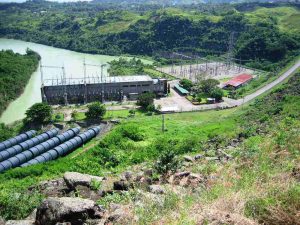|
Getting your Trinity Audio player ready...
|

For as long as many people in the Philippines can remember, electricity has been a luxury. Lack of stable electricity has been a part of daily lives. Most Filipinos never dreamed that the rolling power outages of the 1990s still bedevil the country today.
The Philippines has suffered a persistent power shortage since the mid-1980s. Critics blamed former President Corazon Aquino for failing to provide alternative power sources after she ordered the closure of a nuclear power plant in Albay as soon as she took office in 1986.
In 1992, the government promised to end the blackouts that turned Manila’s chaotic life into a sweltering nightmare affecting households, offices, and businesses which sharply undercut Aquino’s attempts to rescue an economy.
Philippines Geothermal Capacity
The Philippines has over 30 million more people than Thailand, but it does not produce half the electricity. In terms of geothermal-power capacity, the Philippines is second only to the United States. However, the country experiences transmission and distribution failures, lack of domestic energy production, and challenging geography have meant a perennial power problem.

Governmental dependence on imported fuel has not helped either. The electricity tariffs are set by the market that is among the highest in the region. Throw the aging power plants and the debt-ridden rogue cooperatives into the mix, and the likelihood of blackouts becomes virtually a hundred percent.
The ambitious Electric Power Industry Reform Act (EPIRA) of 2001 was supposed to provide some relief, but its effectiveness has been negligible. The law mandated the privatization of state-owned power enterprises to ensure access to affordable electricity and free and fair competition. However, an inadequate legal framework like weak competition laws resulted in market power abuse and an ineffective regulatory body.
The Department of Energy came up with short-term restorative measures to help tide over supply shortages, but the real cause for concern is the long-term.
Blackouts Have Become a Way of Life
Filipinos struggle with what has become a way of life. Bureaucratic delays, community resistance, and inadequate planning compounded the problem. For example, there were delays in building a facility capable of generating geothermal power of 110 megawatts (MW) in Albay Province and Batangas Province, a 300 MW coal-fired plant.

Even when the country had an insufficient electrical generating capacity crisis in the 1990s, the Aquino government decided not to use the facility because it was on a seismic fault. As a result, the badly needed 75 percent expansion of national electric consumption in Luzon did not happen.
But, blackouts do not always mean insufficient power supply. The Luzon grid has a dependable capacity of around 15,000 MW, which is more than sufficient to cover the island region’s projected peak power demand of 11,841 MW in 2021.
Department of Energy’s Recommendation
The Department of Energy says reserves are needed to prevent blackouts from happening. The officials believe that regulating reserves of at least 400 MW will ensure the reliability of the grid. But, when the power demand is high during the increase of heat index, the Luzon grid could fail.
Typically, plants have preventive maintenance scheduled throughout the year. Still, blackouts happen because the coal-fired power station was offline for repairs, there is a breakdown at the generating stations, or something has tripped transmission lines.
Power plants also undergo maintenance. Two-thirds of the 192 plants connected to the Luzon grid are more than 15 years old, which has a higher tendency to malfunction and shut down. Power problems happen when the electricity spikes during the dry season. According to the Department of Energy, the demand is dependent on the heat index. A 1-degree Celcius increase in temperature would increase the power demand to a 100-MW.
During the week of the 2022 election, the Philippines is in the midst of the dry season, which means high demands of hydro plants; therefore, temperatures will be peaking around that time. And yet, according to the Department of Energy, the entire month sits about the contingency reserve threshold, so the agency claims blackouts are unlikely to happen.
Written by Janet Grace Ortigas
Edited by Cathy Milne-Ware
Sources:
Rappler: Explainer: Why do rotational blackouts happen? By Aika Rey
Los Angeles Times: Brownouts Darken Outlook for Aquino : Philippines: Power outages cripple industry and snarl traffic. Criticism has focused on the president; by Bob Drogin
Bloomberg: Main Philippine Island Faces Power Outage as Plants Shut; by Cecilia Yap
Featured and Top Image Courtesy of don2g’s Flickr Page – Creative Commons License
First Inset Image Courtesy of Madz Pacpaco’s Flickr Page – Creative Commons License
Inset Image Courtesy of Can Pac Swire’s Flickr Page – Creative Commons License



